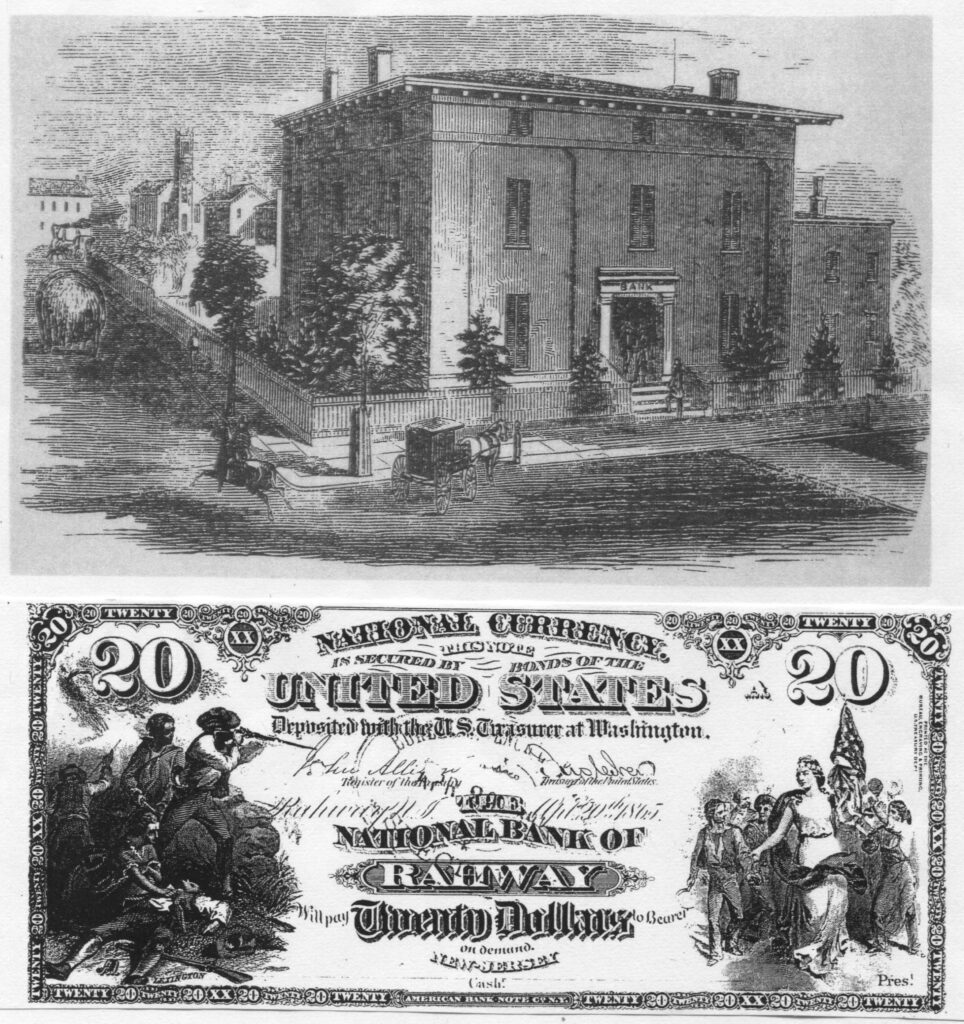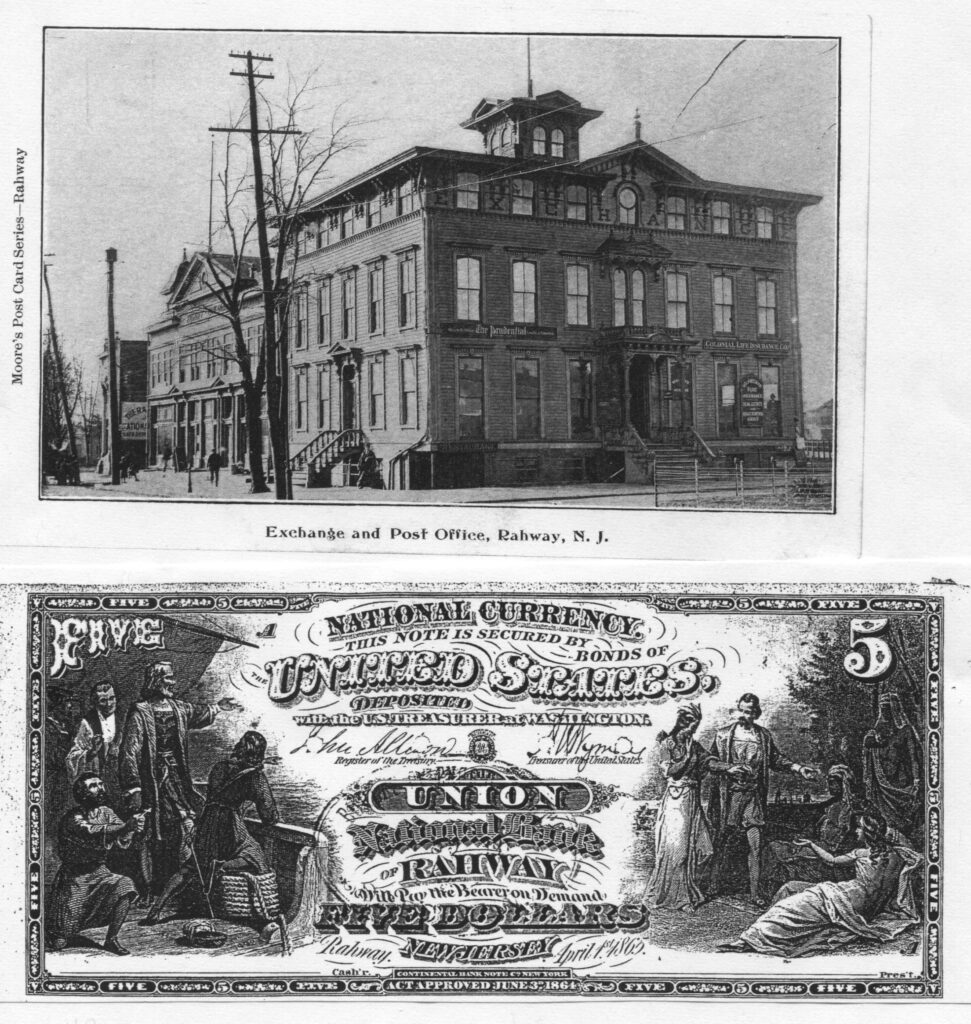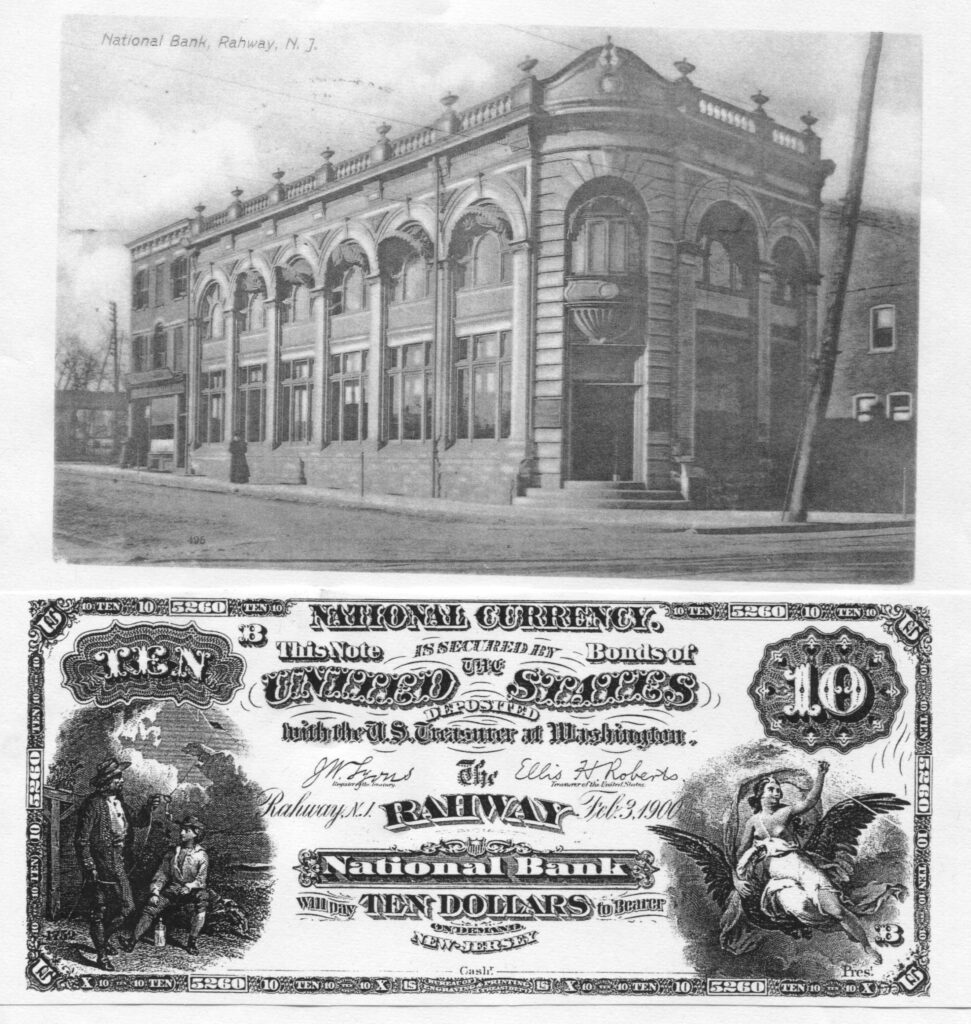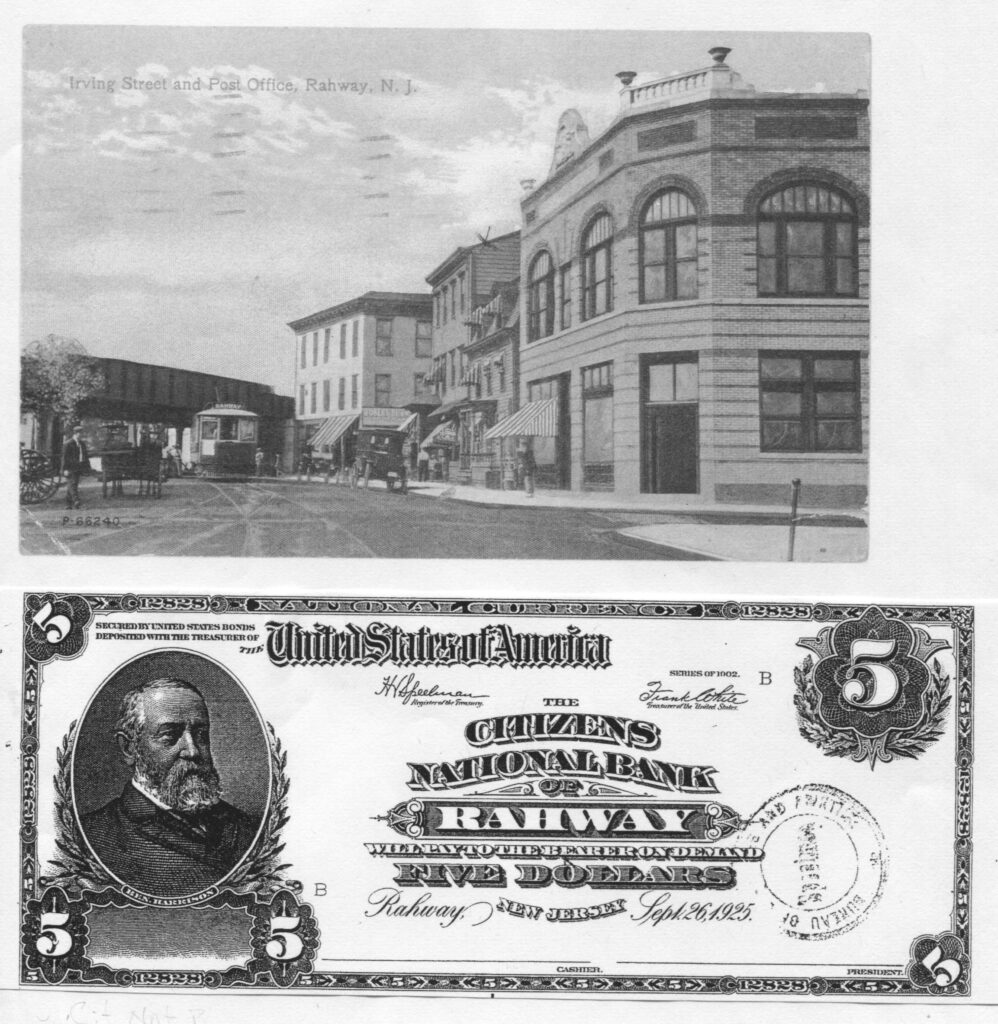
Rahway Banks on United States Currency
Submitted by Al Shipley, City Historian and Rahway Library Research Consultant
We all know what American dollars look like. No matter the denomination, the appearance of our paper money is something we readily recognize. Yet when introduced to the currency from another time period, one might easily assume it’s just some kind of “play money,” especially if the names of Rahway banks are prominently displayed on the front of the bills. In reality, the “Rahway” bills actually were United States legal tender and were circulated by four Rahway banks for portions of over seventy years.
Before the Civil War, banks were chartered by the state governments where they were located. Different states developed different regulations and policies creating a system that was poorly integrated across state lines. As a result, it became more and more obvious that a nationally regulated banking structure was needed.
In February, 1863, the National Banking Act was created by President Abraham Lincoln with a three-fold purpose: to create a national chartering and regulatory system, to float Federal war bonds to help finance the Civil War, and to establish a national currency. After the Act was passed by Congress, more than 1,500 state banks, including two in Rahway, converted to the National banking system. Two more national banks would be established in the city after 1900. The national banks would be chartered and supervised by the Office of the Comptroller of Currency, an agency in the U. S. Treasury Department.
The new currency would be designed and printed in Washington D.C. Local banks were given the option of having the name of their bank added on the face side. The Rahway banks took advantage of the offer. The following are images of the four Rahway national banks and samples of the bills circulated by each.



